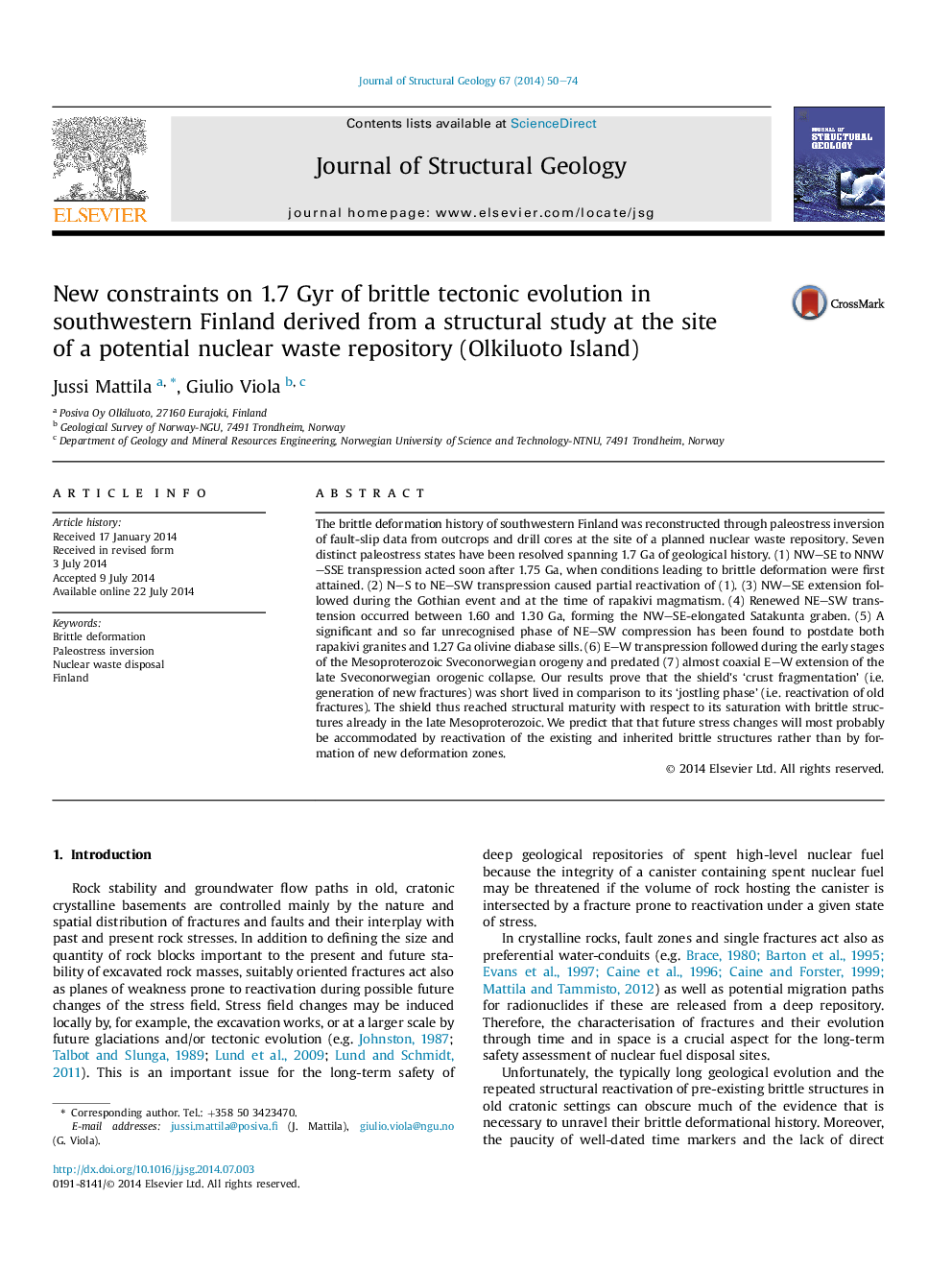| کد مقاله | کد نشریه | سال انتشار | مقاله انگلیسی | نسخه تمام متن |
|---|---|---|---|---|
| 4733106 | 1356988 | 2014 | 25 صفحه PDF | دانلود رایگان |

• A unique structural data set from southwestern Finland.
• New constraints on the brittle tectonic evolution of southwestern Finland.
• Our study reveals seven distinct paleostress states spanning over a period of 1.7 Ga.
• Relation between fragmentation and reactivation in Fennoscandia is established.
The brittle deformation history of southwestern Finland was reconstructed through paleostress inversion of fault-slip data from outcrops and drill cores at the site of a planned nuclear waste repository. Seven distinct paleostress states have been resolved spanning 1.7 Ga of geological history. (1) NW–SE to NNW–SSE transpression acted soon after 1.75 Ga, when conditions leading to brittle deformation were first attained. (2) N–S to NE–SW transpression caused partial reactivation of (1). (3) NW–SE extension followed during the Gothian event and at the time of rapakivi magmatism. (4) Renewed NE–SW transtension occurred between 1.60 and 1.30 Ga, forming the NW–SE-elongated Satakunta graben. (5) A significant and so far unrecognised phase of NE–SW compression has been found to postdate both rapakivi granites and 1.27 Ga olivine diabase sills. (6) E–W transpression followed during the early stages of the Mesoproterozoic Sveconorwegian orogeny and predated (7) almost coaxial E–W extension of the late Sveconorwegian orogenic collapse. Our results prove that the shield's ‘crust fragmentation’ (i.e. generation of new fractures) was short lived in comparison to its ‘jostling phase’ (i.e. reactivation of old fractures). The shield thus reached structural maturity with respect to its saturation with brittle structures already in the late Mesoproterozoic. We predict that that future stress changes will most probably be accommodated by reactivation of the existing and inherited brittle structures rather than by formation of new deformation zones.
Journal: Journal of Structural Geology - Volume 67, Part A, October 2014, Pages 50–74